The Watch The Grey Onlineclipboard is a fundamental part of any modern operating system that even the least tech inclined are familiar with.
It is one of the greatest features the point and click interface brought to personal computers, and you don't need to understand the mechanics behind this invisible, temporary storage system in order to copy and paste your way through text, images, files and folders.
The act of transferring text from one part of a computer-based document to a different location within the same or different computer-based document was a part of the earliest on-line computer editors in the mid to late 1960s, though it was all command based.
Engineers at Xerox PARC later coined the names "cut" and "copy" for the first step and "paste" for the second step of the process and implemented it into several text editors, while Apple mapped the functionalities to key combinations consisting of the Command key held down while typing the letters X (for Cut), C (for Copy), and V (for Paste), widely popularising its use through the Lisa and Macintosh operating systems in the early 1980s.

Another factoid: Appropriately for this article, I copied, pasted, and edited bits and pieces from this Wikipedia page and this Quora answer to bring you that nugget of computer history.
The clipboard has evolved significantly throughout the years, but for all its usefulness, operating systems like Windows and macOS seem content with offering basic functionality and letting power users with more specific needs use third party clipboard managers.
The main use case for a clipboard manager is to keep a history of what you've copied and being able to keep dozens or hundreds of clips readily available for pasting as long as you need them, even after rebooting your computer.
They're useful when researching online to collect snippets of texts and useful URLs in a central place before organising your thoughts or anything you're working on.
A word of caution, though. While saving the contents of your clipboard to your hard drive for days, weeks, even years might be convenient it can also be a potential security risk if someone gains access to your computer. It's a good idea not to store passwords and other sensitive information in there.
With that said once you've added a clipboard manager into you workflow you'll see that they can be major time savers and can offer a big productivity boost, especially if you routinely have to re-copy snippets of text. Here are our favorite options in a few distinct categories for both desktop and mobile.
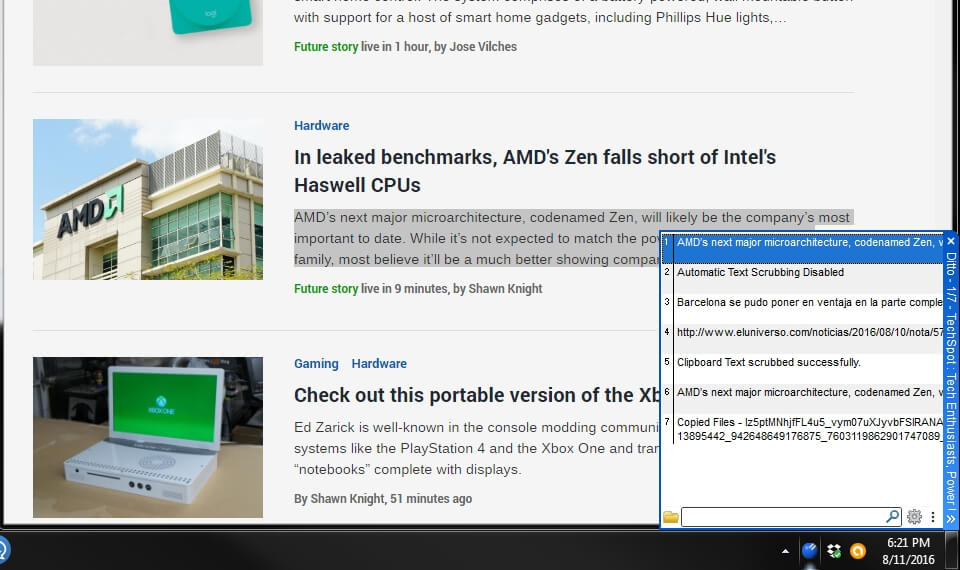
Ditto has been around for years and still ranks among the best clipboard managers for Windows. It's simple yet powerful, fast and light on resources despite packing a decent amount of features. You can sort your clips into groups, search for specific keywords through its ridiculously long history, and make use of multiple hot keys to make copying and pasting. Ditto supports files, images, and text and offers encrypted, cloud-syncing for using a single clipboard across multiple computers.
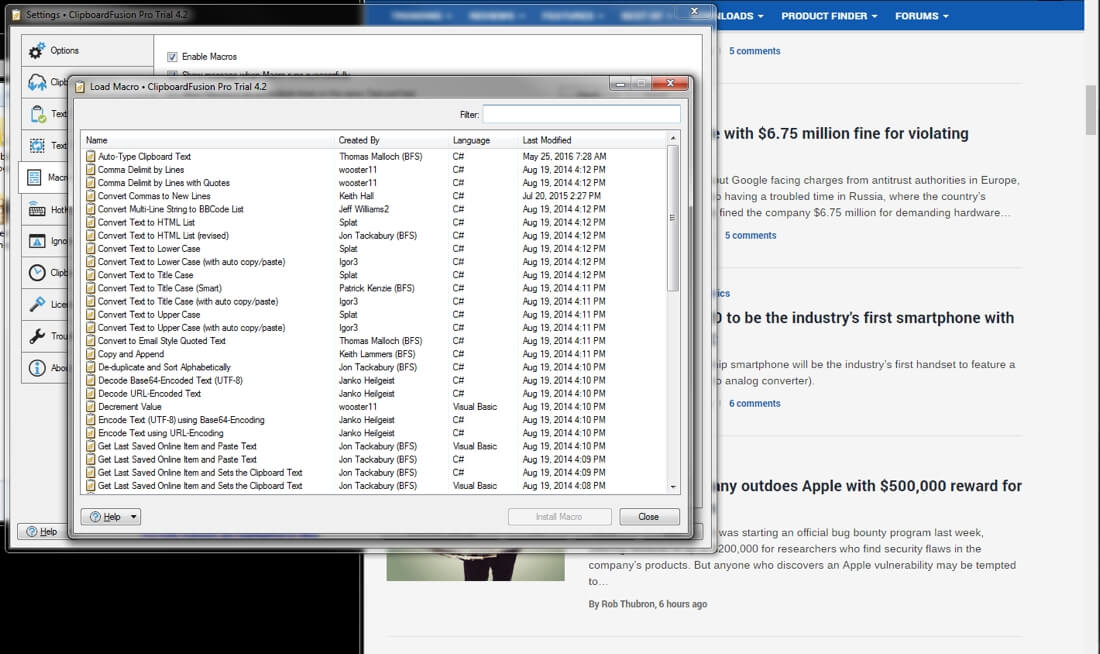
ClipboardFusion is another simple but powerful clipboard manager that's actively maintained so it'll work well and won't look outdated on the most recent versions of Windows. It's headlining feature is the ability to scrub text copied to the clipboard so that it can be pasted into different applications without formatting – it can be done automatically or with a customizable HotKey so you can retain formatting if you want to.
It also comes with a text replace feature that allows you to easily find and replace all instances of a specific text string in your clipboard manager. A preview feature to get a quick glimpse at clipboard images and color coded HTML with a toaster pop-up, and has full support for macros to perform completely customized transformations on your text.
ClipboardFusion is free to use but offers a paid subscription for advanced syncing features across multiple devices – including Android and iOS.
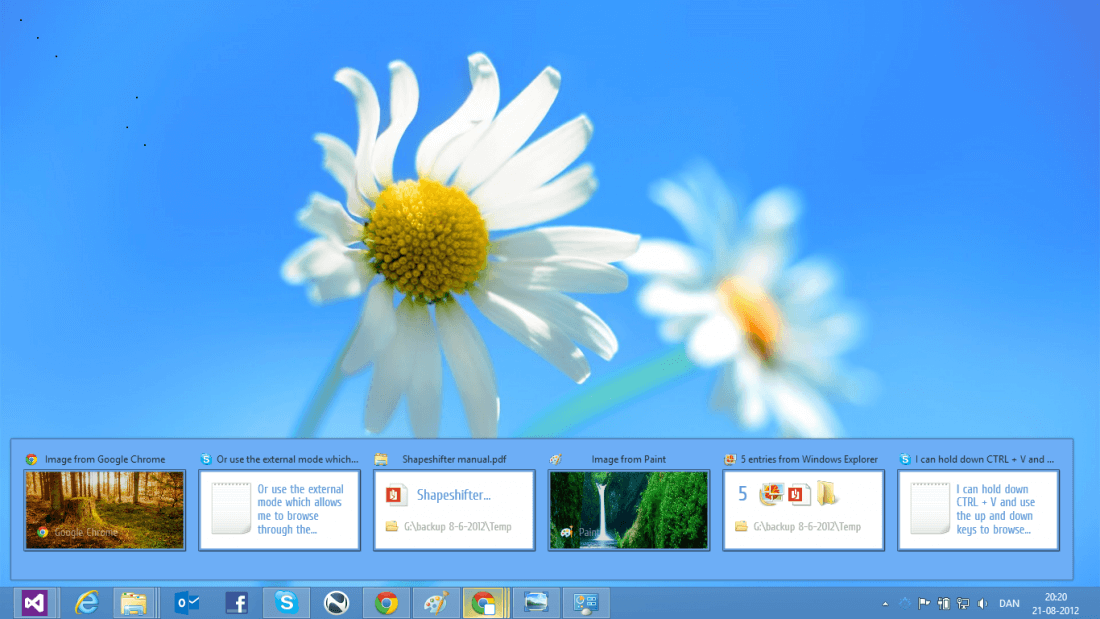
ShapeShifter is more of a clipboard extender rather than a full fledged manager as it just takes the native clipboard functionality and makes it more capable without adding too many bells and whistles.
One key difference next to other clipboard managers is that Shapeshifter stores clipboard contents in memory instead of the hard drive, so while you can have multiple clippings readily available, everything will be cleared when you restart the computer. If you want the convenience of a more powerful clipboard but don't care about fancy features or keeping months long history of clippings, this one's for you.
ShapeShifter supports files, text, and images and sports a modern dock-like interface. Unfortunately development came to a halt a few years ago so Shapeshifter doesn't play well with Windows 10. A new open source version currently in beta is being written from the ground up but it's still very buggy and we're not sure if it's being actively worked on.
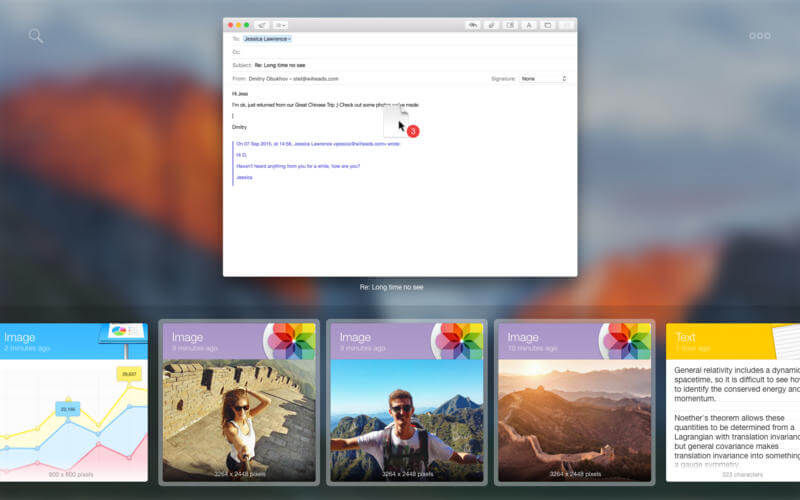
Paste is an impressive clipboard manager that uses a colorful interface with large previews to make it easy to identify the item you want to paste. It'll automatically add anything you copy to its clipboard history, which you can access though a keyboard shortcut or the Paste icon in the menu bar.
By default it'll keep the last 100 items on the clipboard but you can can configure this number all the way down to 10 and up to unlimited. There's a powerful search function that's especially handy as your number of snippets grows, and besides searching for text within a clipping it can also find file types such as 'photo' or 'video', for example. Paste also offers Pinboards, which are effectively folders that you can organize your snippets into, such as code snippets, and URLs.
You can setup rules so that Paste doesn't save anything that's copied in certain apps. By default, it doesn't store anything copied from Keychain Access, and it will recognize if you use a third party password manager and automatically exclude that, too.
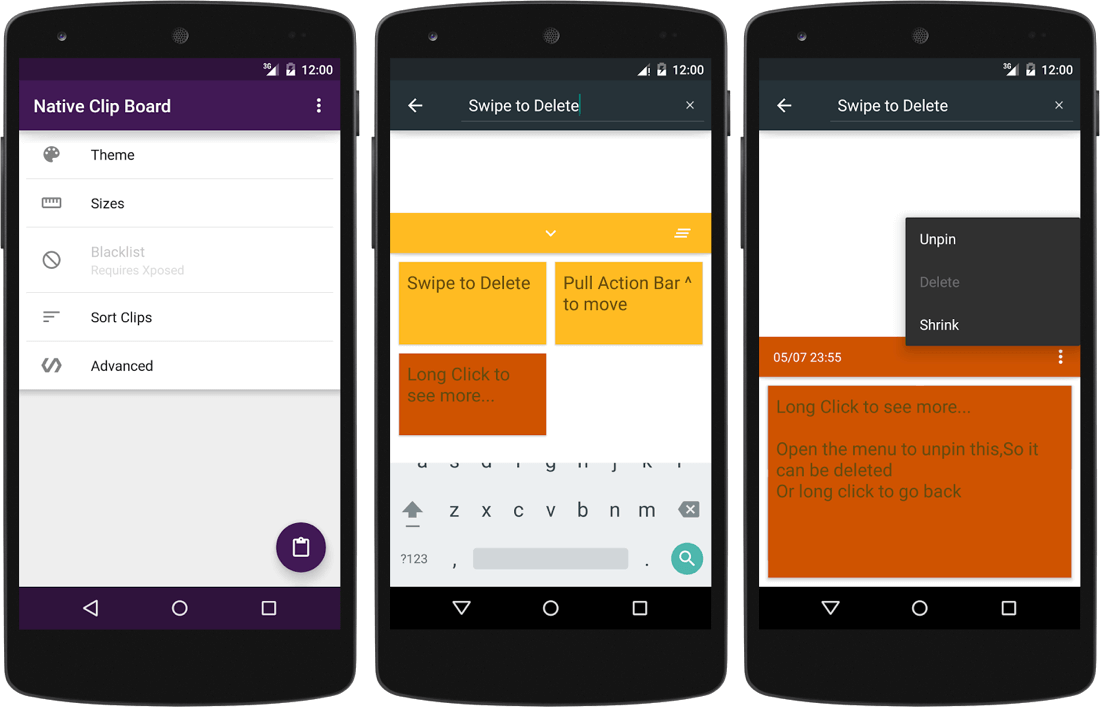
Native Clipboard automatically saves everything you copy onto the clipboard and gives you tools to easily manage things. It has a handy floating interface that's summoned by double-tapping on any text field. From there you can insert the text you're looking for, swipe on one of the saved copies to delete it, or long-press it to pin it to the top of the list if it's something you think you'll need often.
Native Clipboard uses a Material Design UI that can be customized to your liking. It's also free and open-source, compatible with Android 4.0 or later. You will need to give it access to your accessibility settings for the double tap functionality to work properly.
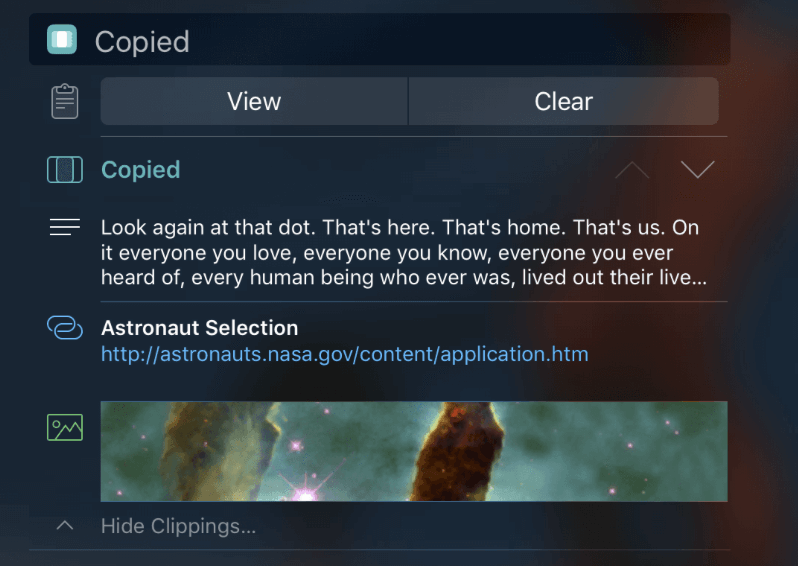
For those with an iPhone, Copied is a clipboard manager for iOS that keeps track of everything you copy, lets you easily edit clippings, share links and text, and has an excellent batch feature. The app offers a handy Today Widget for fast access to clippings, and if you choose to enable auto-save, what you have in the clipboard will be automatically added to Copied as soon as you open the widget.
Clippings can be copied and saved from any app with the iOS Share Sheet and you can use the Copied Keyboard to input saved text into other apps. Copied is also available on iPad, has a more feature packed macOS version and you can keep everything in sync with iCloud.
 Nintendo Switch 2 preorder just days away, per leak
Nintendo Switch 2 preorder just days away, per leak
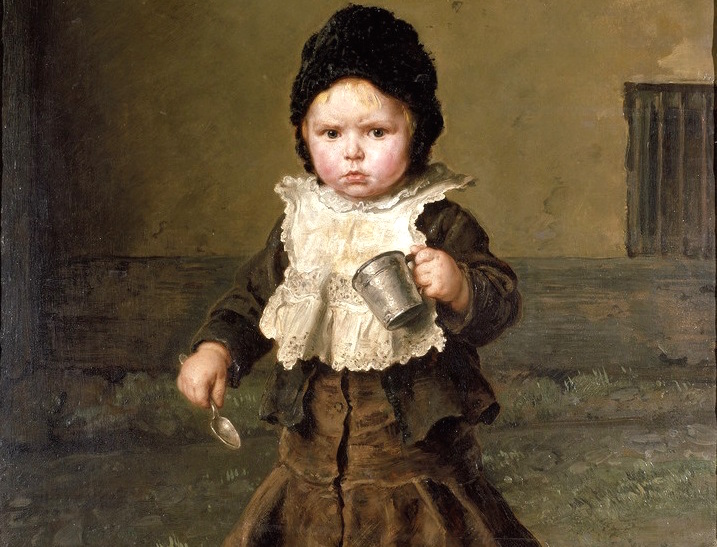 On “Hangry”
On “Hangry”
 RIP Pot Roast, the TikTok cat of our dreams
RIP Pot Roast, the TikTok cat of our dreams
 Everything you need to know about X CEO Linda Yaccarino's disastrous interview
Everything you need to know about X CEO Linda Yaccarino's disastrous interview
 The Horror of Philosophy, the Philosophy of Horror
The Horror of Philosophy, the Philosophy of Horror
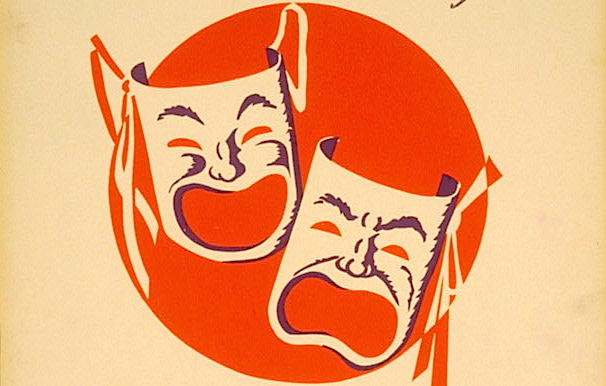 The Last Bastion of Print: The Theatre
The Last Bastion of Print: The Theatre
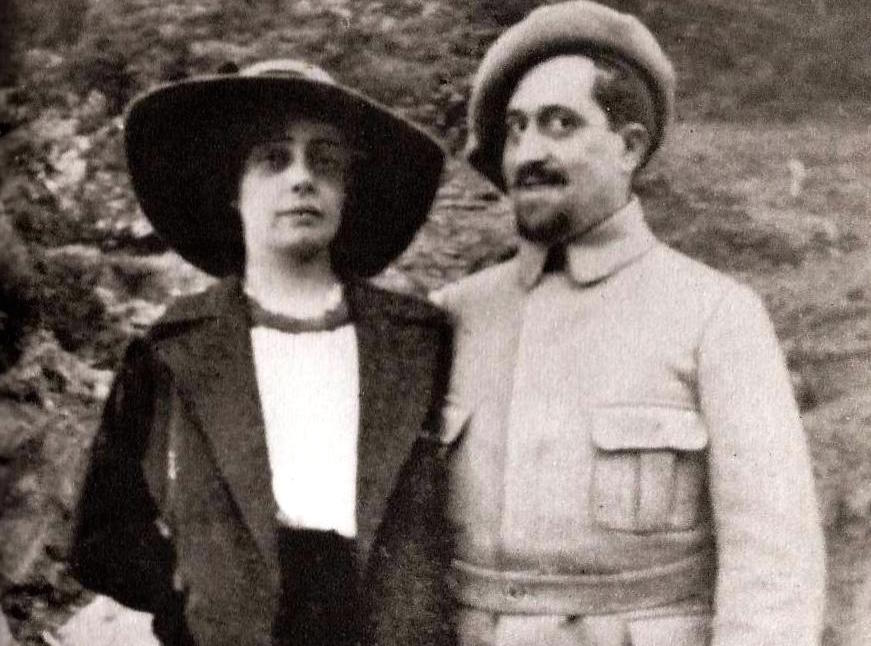 A Love Letter from Guillaume Apollinaire, in the Trenches
A Love Letter from Guillaume Apollinaire, in the Trenches
 I'm a college professor. My advice to young people who feel hooked on tech
I'm a college professor. My advice to young people who feel hooked on tech
 The “Romance” of Travel: Joseph Roth’s Hotel Years
The “Romance” of Travel: Joseph Roth’s Hotel Years
 'Maus' publisher Penguin Random House wants the book removed from the Internet Archive
'Maus' publisher Penguin Random House wants the book removed from the Internet Archive
 Spotify now transcribes podcasts so you can read along. Here's how it works.
Spotify now transcribes podcasts so you can read along. Here's how it works.
 6 Tumblr communities you may have forgotten about
6 Tumblr communities you may have forgotten about
 Best IPL deal: Save $80 on Braun IPL Silk·Expert
Best IPL deal: Save $80 on Braun IPL Silk·Expert
 “Coke,” a Poem by Scott Cohen
“Coke,” a Poem by Scott Cohen
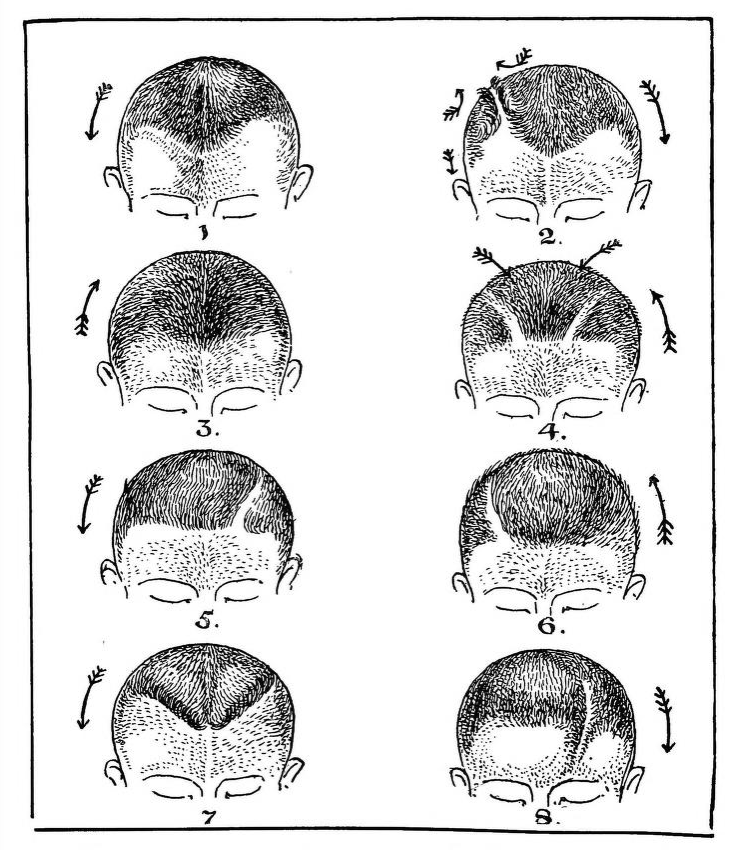 Avoid This Book: The Direction of Hair in Animals and Man
Avoid This Book: The Direction of Hair in Animals and Man
 The Hotel Is Haunted—But No One Cares
The Hotel Is Haunted—But No One Cares
 'The Last of Us' Season 2, episode 4: Why Ellie sings 'Take on Me'
'The Last of Us' Season 2, episode 4: Why Ellie sings 'Take on Me'
 Williams Found Plums in the Icebox—Do They Belong There?
Williams Found Plums in the Icebox—Do They Belong There?
Ralph Ellison and Joseph Mitchell: A Friendship Hiding in the ArchivesBest Dyson deal: Score the Dyson Supersonic Origin for under $300Peter Matthiessen’s Notebook, Lost and FoundHow content creators can overcome the fear of failureSome People Fetishize Librarians; I Fetishize Card CatalogsBest tablet deal: Get a refurbished Fire HD 10 Tablet for under $70Hookup app Feeld partners with users for rebrandOn the Shelf: the Final Edition'The White Lotus' Season 2 finale memes take over TwitterIt’s Time to Get in Touch with Your Inner GrotesqueThe Poetry of IcebergsSolomon D. Butcher’s Photographs Celebrate the PioneerTinder introduces Relationship Goals profile featureStaff Picks: Renee Gladman, Carol Rama, and Ocean Mythology8 Best Bose Black Friday deals: QuietComfort Earbuds II and more15 great action movies now streaming on PeacockIt’s Never a Bad Time to Brush Up on Your DemonologyChatGPT: Twitter can't stop asking the AI chatbot questionsStraightening out ‘Ulysses’: A Translator’s NotesAmerican Sounds: The Old, Weird Days of National Public Radio Anacondas in the Park by Pedro Lemebel Making of a Poem: Patty Nash on “Metropolitan” by Patty Nash Death Is Very Close: A Champagne Reception for Philippe Petit by Patrick McGraw Dream Gossip by The Paris Review Tobias Wolff Will Receive Our 2024 Hadada Award by The Paris Review Old Friends by Devon Brody The Poetry of Fact: On Alec Wilkinson’s Moonshine by Padgett Powell Announcing Our Summer Issue by Emily Stokes Hannah Arendt, Poet by Srikanth Reddy The American Sentence: On Gertrude Stein’s Melanctha by Edwin Frank Chasing It Down the Elevator Shaft to the Subconscious: Or, Getting Hypnotized by Jeremy Butman The Measure of Intensities: On Luc Tuymans by Joshua Cohen "Perfection You Cannot Have": On Agnes Martin and Grief by Cody Delistraty Doodle Nation: Notes on Distracted Drawing by Polly Dickson Prescribing Creativity: The Meta Rorschach by Diana Garza Islas Three Letters from Rilke by Rainer Maria Rilke Bolaño in Girona: A Friendship by Javier Cercas At the Five Hundred Ponies Sale by Alyse Burnside Anthe: On Translating Kannada by Deepa Bhasthi
1.4506s , 10158.375 kb
Copyright © 2025 Powered by 【Watch The Grey Online】,Miracle Information Network